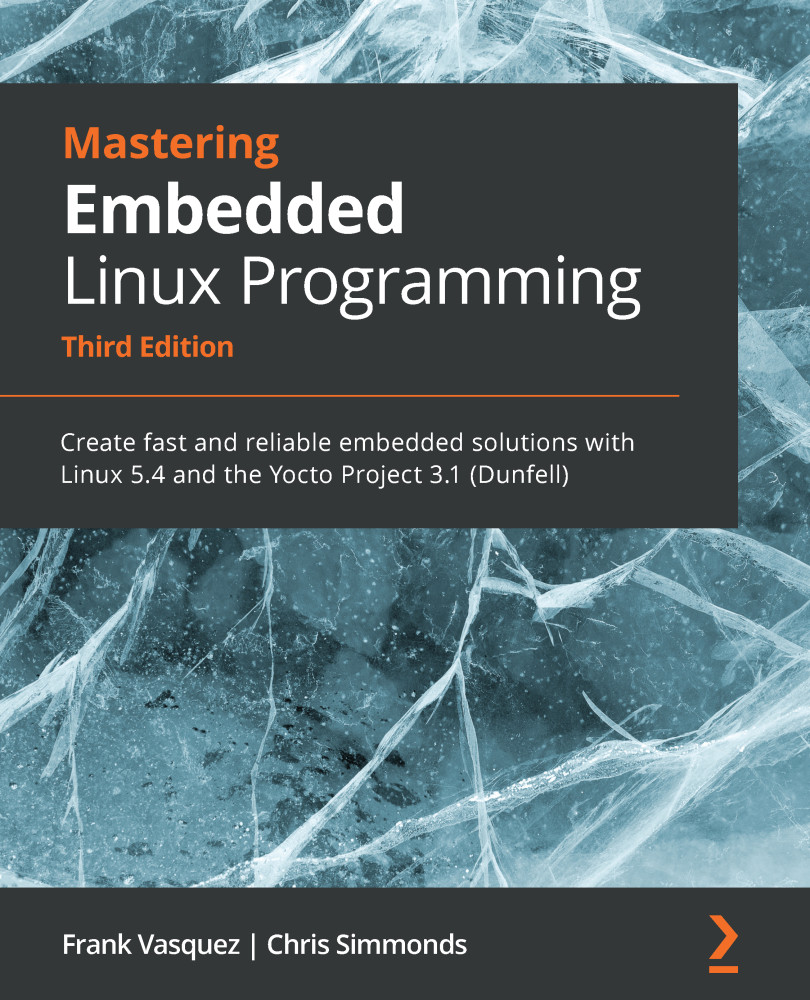Moving through the project life cycle
This book is divided into four sections that reflect the phases of a project. The phases are not necessarily sequential. Usually, they overlap and you will need to jump back to revisit things that were done previously. However, they are representative of a developer's preoccupations as the project progresses:
- Elements of Embedded Linux (Chapters 1 to 8) will help you set up the development environment and create a working platform for the later phases. It is often referred to as the board bring-up phase.
- System Architecture and Design Choices (Chapters 9 to 15) will help you to look at some of the design decisions you will have to make concerning the storage of programs and data, how to divide work between kernel device drivers and applications, and how to initialize the system.
- Writing Embedded Applications (Chapters 16 to 18) shows how to package and deploy Python applications, make effective use of the Linux process and thread model, and how to manage memory in a resource-constrained device.
- Debugging and Optimizing Performance (Chapters 19 to 21) describes how to trace, profile, and debug your code in both the applications and the kernel. The last chapter explains how to design for real-time behavior when required.
Now, let's focus on the four basic elements of embedded Linux that comprise the first section of the book.
The four elements of embedded Linux
Every project begins by obtaining, customizing, and deploying these four elements: the toolchain, the bootloader, the kernel, and the root filesystem. This is the topic of the first section of this book.
- Toolchain: The compiler and other tools needed to create code for your
target device. - Bootloader: The program that initializes the board and loads the Linux kernel.
- Kernel: This is the heart of the system, managing system resources and interfacing with hardware.
- Root filesystem: Contains the libraries and programs that are run once the kernel has completed its initialization.
Of course, there is also a fifth element, not mentioned here. That is the collection of programs specific to your embedded application that make the device do whatever it is supposed to do, be it weigh groceries, display movies, control a robot, or fly a drone.
Typically, you will be offered some or all of these elements as a package when you buy your SoC or board. But, for the reasons mentioned in the preceding paragraph, they may not be the best choices for you. I will give you the background to make the right selections in the first eight chapters and I will introduce you to two tools that automate the whole process for you: Buildroot and the Yocto Project.






































































